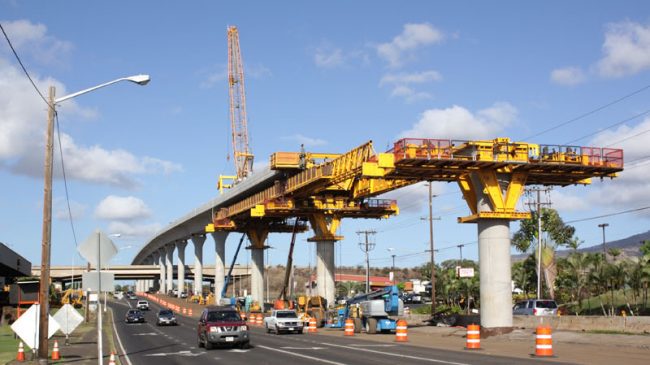November witnessed the financial close for Cintra/Meridiam’s $3.5 billion revenue-risk public-private partnership (P3) concession to rebuild 22 miles of I-66 in northern Virginia, adding express toll lanes in both directions. The Transportation Infrastructure Finance and Innovation Act (TIFIA) loan and private activity bonds were rated investment-grade by both Fitch and Moody’s, and the bonds were over-subscribed.
What a difference three years makes. In 2014, the editor of this Public Works Financing newsletter cautioned me that toll (i.e., revenue-risk) concessions were on the way out, due to post-recession investor skittishness over several revenue-risk concession bankruptcies, especially that of the Indiana Toll Road. Many observers shared the view that availability-payment P3 concessions were the way forward in this country, and since the initial use of the availability-payment (AP) model in 2009 (Port of Miami Tunnel and I-595, both in Florida), nine AP highway projects have been financed.
But a close examination of the ongoing table published in this newsletter reveals that since 2009 there have also been nine revenue-risk highway P3 concession projects financed, including this year’s I-66. To be sure, the table’s AP total includes two rail transit projects, but those could not have been financed based on user revenues, so a true apples-to-apples comparison must be limited to highway projects that could be financed based on their toll revenues.
So point one of my message this month is that in the highway sector, there is no longer a trend of AP projects displacing revenue-risk projects. In fact, total investment in the nine revenue risk (RR) projects since 2009, at $14.6 billion, tops the $9.9 billion invested in AP highway projects during the same nine years.
My second point is to suggest that in the highway sector going forward, RR concessions not only should be the preferred choice but very likely will be. My text for this sermon is a new Reason Foundation study.
The paper first explains what a major advance Design Build Finance Operate Maintain (DBFOM) is over traditional Design Bid Build (DBB) and Design Build (DB) procurement. By any set of measures, the Port of Miami Tunnel (where tolling would have been counter-productive to the project’s rationale) is a spectacular success for AP concessions, for reasons well-known to readers of this newsletter. But where tolling is feasible, there are additional gains to be had from going the revenue-risk route, as the paper elaborates.
One of the largest benefits is to increase the total investment going into highway projects. This occurs where the project cost is beyond what conventional highway revenue sources can fund, and where AP financing would simply divert those revenues from other projects rather than increasing the total amount of highway investment.
The counter to this, of course, is that the state DOT can do the tolling itself, using those revenues to cover most or all of the availability payments. True enough, but in that case the state (aka the taxpayer) is left with the traffic and revenue risk. We know bankruptcies of toll projects can occur, so the public policy question becomes whether the taxpayers or sophisticated investors should take the traffic and revenue risk. In my view, the answer is obvious—and an additional benefit of bankruptcy risk is stronger incentives for the toll concessionaire to do conservative traffic and revenue forecasts and put enough equity into the project to get the project through lean times. I note that the average equity investment in the nine AP highway projects is a mere 9 percent, compared with a 29 percent average for the nine RR highway projects (and a record-high 44 percent for just-financed I-66).
A more-subtle advantage of RR concessions is that they create a direct customer/provider relationship between the roadway user and the concessionaire. The highway becomes a business, in which the company has a powerful ongoing incentive to attract and keep customers. This can affect the design (e.g., convenient locations of on-ramps, signage, advertising) and also the operation (keeping congestion to a minimum to give customers value for their toll payments). In an AP concession where the state charges tolls, that direct customer/provider relationship does not really exist, so those incentives are far less.
A third advantage of highways as businesses is that this reduces the tendency of politics to implement boondoggles. Sound highway projects should first pass a basic benefit/cost (B/C) test, and in most cases a further test of return on investment. Highways like the proposed US 460 in Virginia and Illiana Expressway in Indiana and Illinois—originally proposed as RR concessions–could not meet a return on investment test, and probably not a B/C test, but might have been pushed through as AP concessions for political reasons.
My new Reason study also points out why in the highway sector, the use of AP concessions (at least those without robust toll revenue) cannot become the primary way we procure major highway projects (such as replacing worn-out Interstates). That’s because state treasurers and finance departments are realizing, correctly, that AP obligations are liabilities that must be reflected on the state balance sheet and counted against the state’s bonding limitation. The majority of states already have very large unfunded pension liabilities on their books. The last thing they need is to add very large AP liabilities. Especially not when revenue-risk P3 highway projects are highly desirable as “alternative investments” to diversify the investment portfolios of public-sector pension funds.
When Australia-based IFM Investors purchased the remaining 66 years of the Indiana Toll Road concession, the demand from U.S. pension funds to participate was intense. Some 72 of those funds took part, with CalPERS—America’s largest public pension fund—acquiring a 10 percent share.
Two of the largest problems facing state governments are (1) aging infrastructure needing significant investment, and (2) seriously under-funded public pension systems. Revenue-risk highway P3 concessions can help address both problems.
This column first appeared in Public Works Financing.

